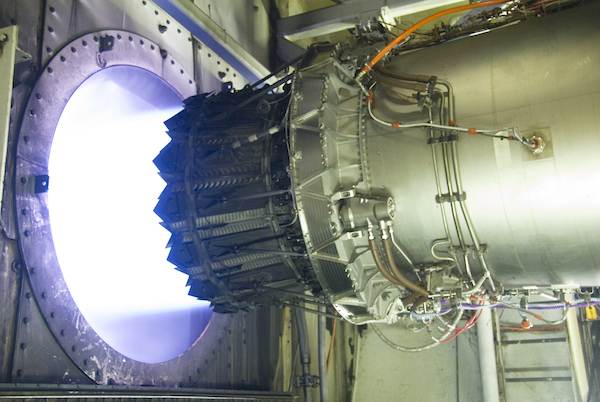
[Image above] Credit: Cimav
Researchers at the Center for Research in Advanced Materials (Cimav) in Mexico are committed to the environment through their efforts to reduce, reuse, and recycle in a perhaps unlikely area of research—thermal barrier coatings.
According to a recent press release, the team, led by Ana Maria Arizmendi Morquecho, is fabricating a thermal barrier coating made from industrial waste. Based on coal combustion byproduct fly ash, the coating earns two ticks in the pros column—it protects jet engines from thermal damage, and it lends the environment a hand by reducing pollution.
Though its composition varies depending on the coal source, fly ash consists of mostly silicon dioxide and calcium oxide. And while it was once released freely to pollute the atmosphere, U.S. regulations now mandate than the majority of fly ash be captured from emissions. U.S. coal-fired power plants reportedly generated about 52 million tons of fly ash in 2012, with a record 45% of that waste reused in other applications, such as in concrete, according to the American Coal Ash Association.
The Cimav researchers report that their technique can help provide another potential use for fly ash waste, repurposed as a ceramic matrix to which nanoparticles can be added to make thermal barrier coatings.
“We found that taking advantage of the large amount of mullite, which is a chemically and thermally stable compound found in the flying ash, we can use this material as a ceramic matrix, which by the addition of different particles have obtained novel nanocomposites that greatly diminish the thermal conductivity and are used in developing coatings for superalloys,” says Arizmendi Morquecho in the release.
A must for any thermal barrier coating to hold true to its name, the coatings can take the heat—the researchers report their coatings can withstand temperatures exceeding 1000°C. The remaining available details are scant, and an email request for more information from Arizmendi Morquecho went unanswered.
However, the group has been analyzing different coating compositions for the past five years [see some of the previous work here, here, and here] and, according to the press release, is “expecting to make the final tests to validate the materials obtained at the laboratory, to continue with the process of scaling up the technology to be transferred to an interested company.”
Author
April Gocha
CTT Categories
- Aeronautics & Space
- Environment
- Material Innovations
- Thermal management
- Transportation



